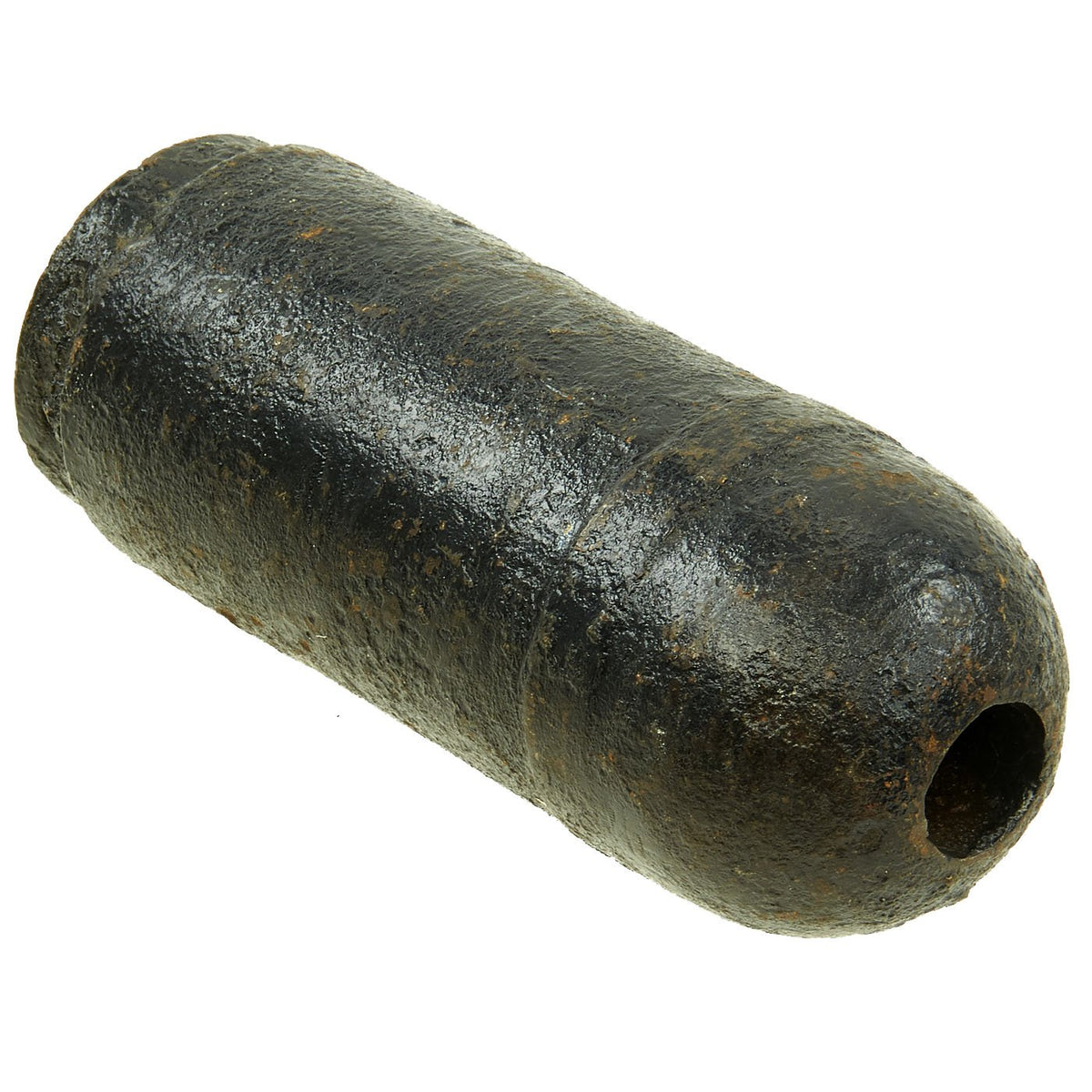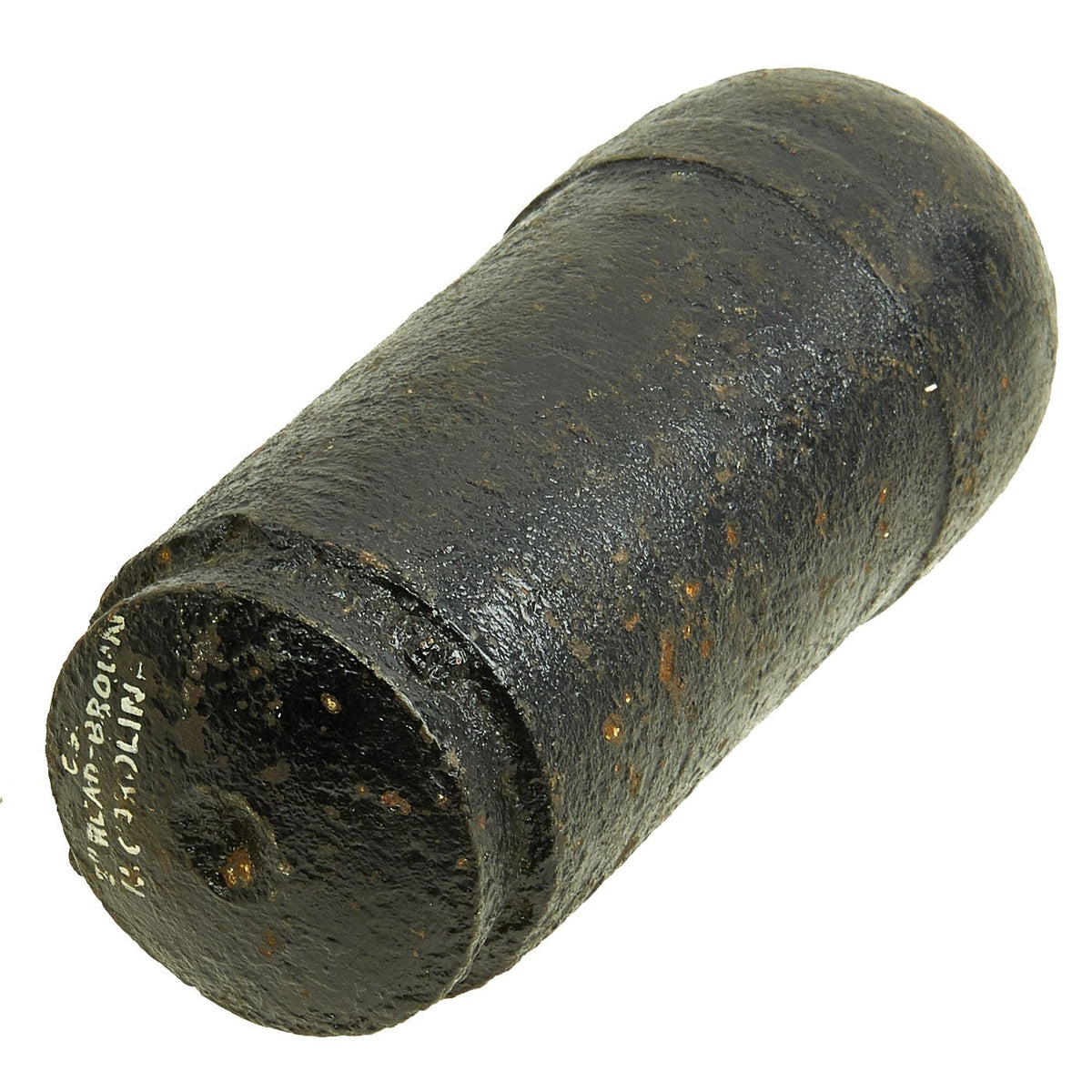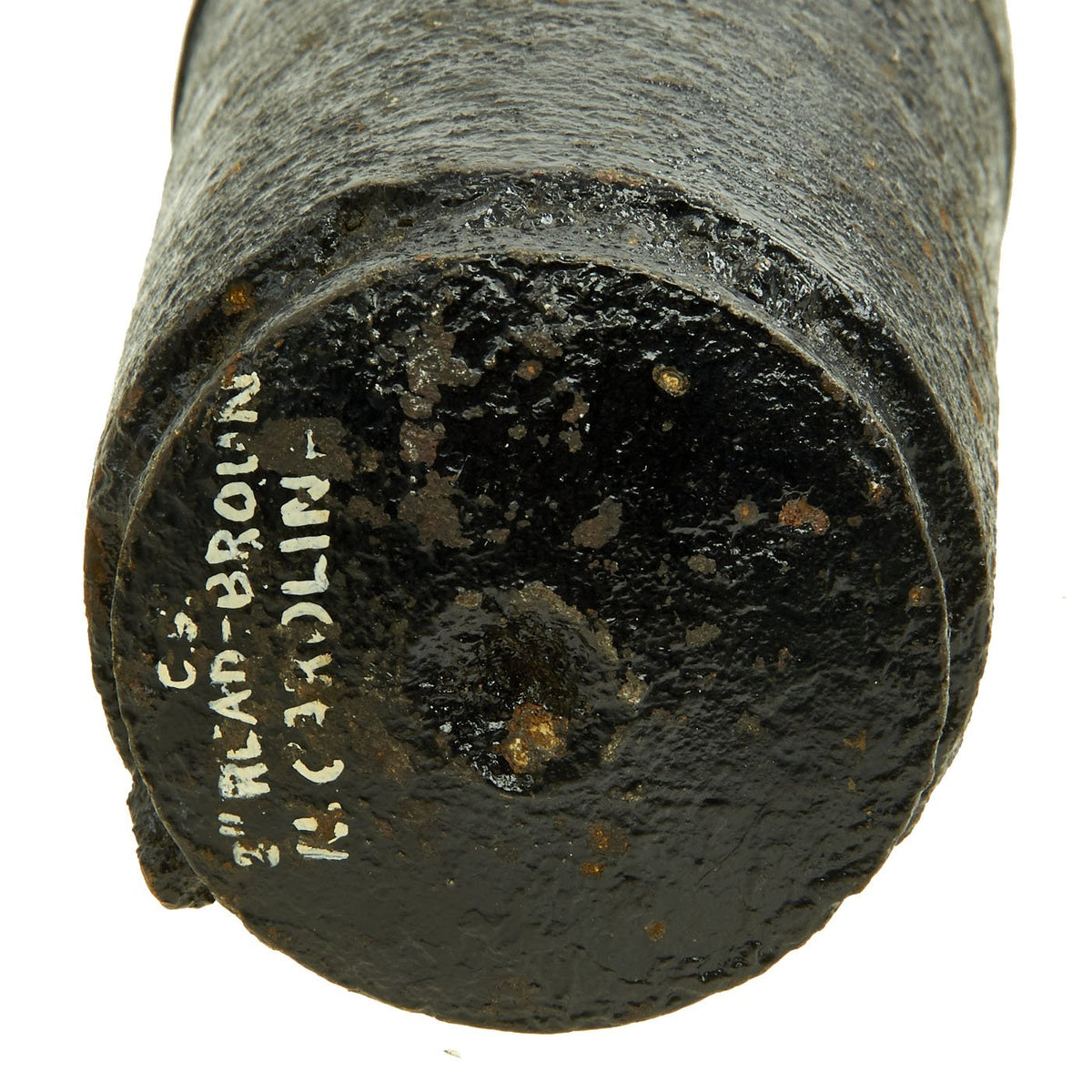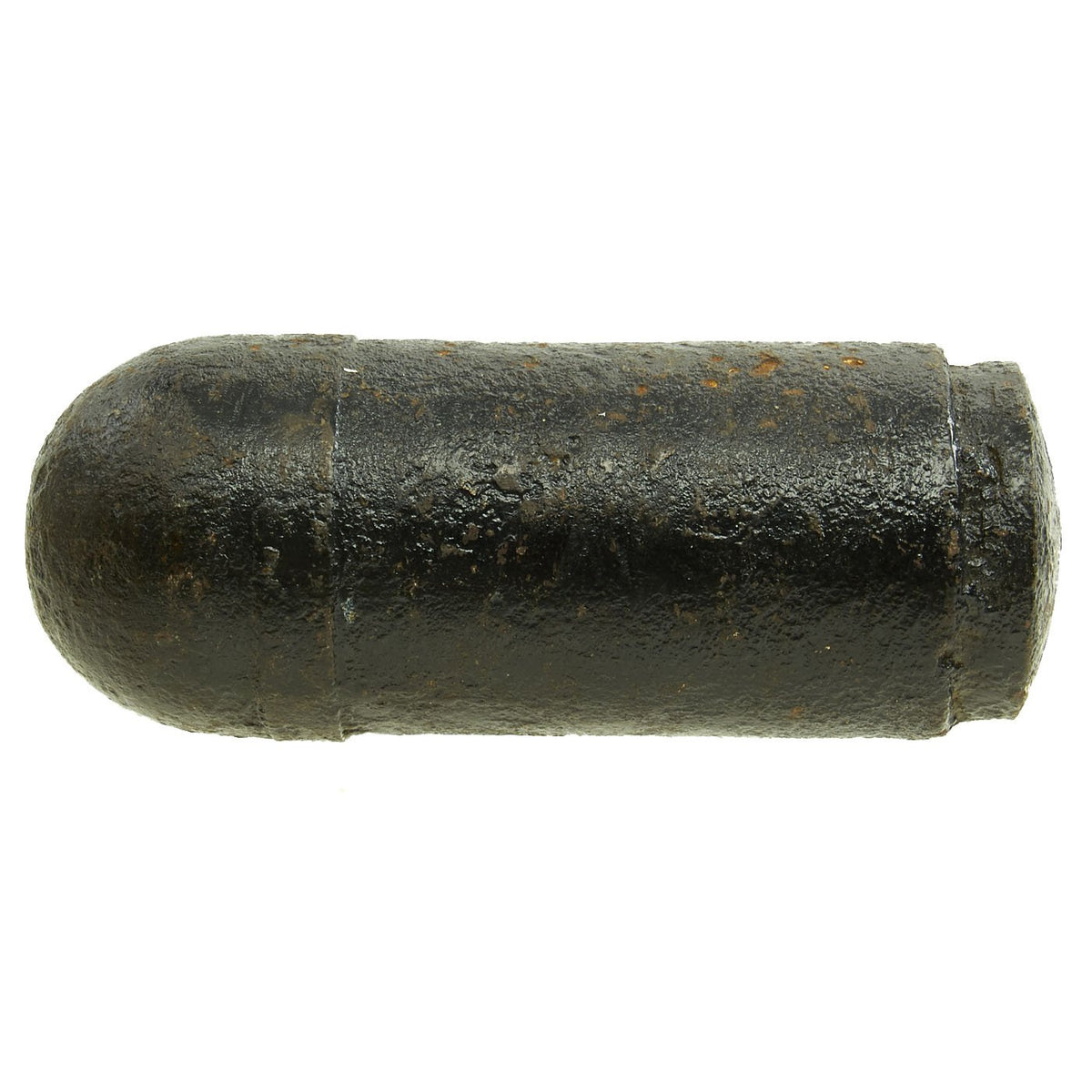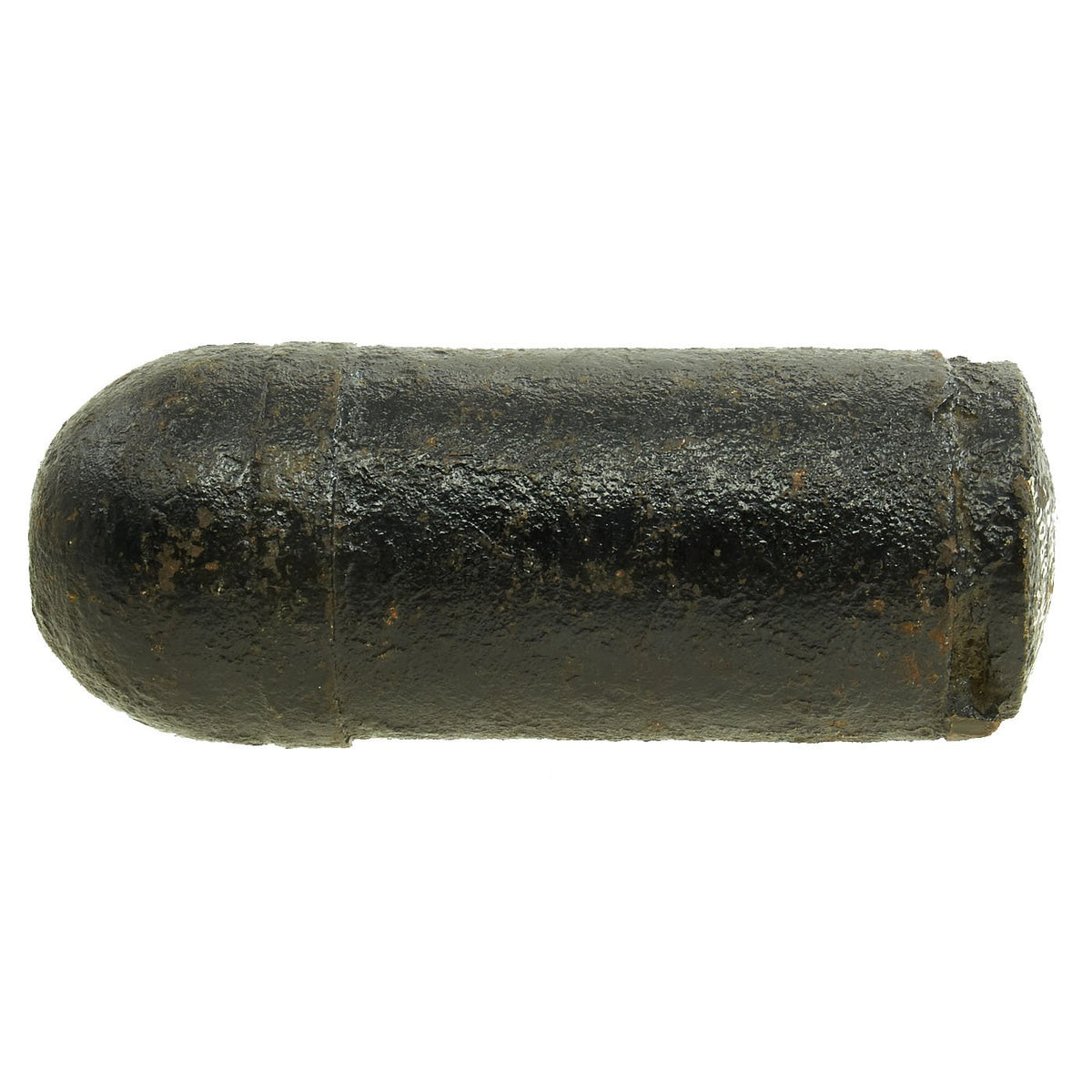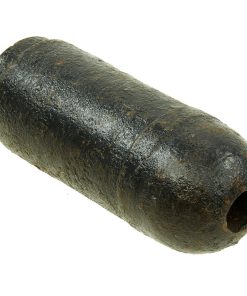Original Civil War Confederate 3-inch Ordnance Rifle Broun Shell – Excavated in North Carolina Original Items
$ 625,00 $ 187,50
Original Item: Only One Available. Original Item: One-of-a-kind. This excavated Confederate 3 inch Broun shell is in very good condition and still retains a small piece of its sabot. This fine Confederate shell has been disarmed, has no repairs, and is ready for display. It will be an excellent addition to any excavated Civil War artillery or general relic collection. Approximate weight is 8.1 lbs and the length is approximately 7 inches. This example was dug in North Carolina in the 1960s and has been painted on the base C.S. Read-Broun N. Carolina.
Broun projectiles are named after their inventor, Lieutenant Colonel William Leroy Broun (commander of the Richmond Arsenal beginning in June 1863), who modified the then-popular Read projectiles. Examples with a copper time fuze plug are uncommon. Most Broun projectiles recovered, such as this example, had a wooden fuze plug fitted for a paper time fuze. The copper sabot would have been about .90 ” high and had two saw cuts to help aid in the expansion in the rifling of the cannon. The sabots were nearly always blown off during firing, such as on this example. The sabot ring was cast into notches in the exterior of the base, which proved to be a less than effective method of attachment.
William LeRoy Broun was born in Loudoun County, Virginia in 1827 and died in Auburn, Alabama, January 23, 1902. He was educated in private schools and at the University of Virginia, where he graduated in 1850. He taught for a year in a private school in Virginia, for two years (1852-54) in a small college in Mississippi, and for two years (1854-56) as professor of mathematics in the University of Georgia. He then taught in a private school until the outbreak of the War of Secession. He rose to the rank of Lieutenant Colonel in the Ordnance Department of the Confederate army. Colonel Broun made many inventions while in the Ordnance Department. At the close of the war he was elected professor of natural philosophy of the University of Georgia, and from 1872-75 was president of the Georgia Agricultural and Mechanical College, a branch of the University. He was professor of mathematics in the University of Texas, 1883-84, and president of the Alabama Polytechnic Institute (A. and M. College, now Auburn University) 1882-83, and from 1884 to his death in 1902. It was the last named institution that the great work of Dr. Broun was performed. He was a good executive and a practical educator, and under his supervision the Alabama Polytechnic Institute became a pioneer and a model for all Southern technical schools.
General George E. Pickett and Dr. William LeRoy Broun were descendants of William Pickett, whose will, dated September 26, 1766, was recorded in the clerk’s office of Fauquier County, Virginia, November 24, 1766.
DIAMETER: 2.94 inches
GUN: 3-inch rifle
LENGTH: 8 3/16 inches
WEIGHT: 9 pounds 2 ounces
CONSTRUCTION: Shell
SABOT: Copper ring
FUZING: Confederate copper fuze plug, paper time fuze
Fast Shipping with Professional Packaging
Thanks to our longstanding association with UPS FedEx DHL, and other major international carriers, we are able to provide a range of shipping options. Our warehouse staff is expertly trained and will wrap your products according to our exact and precise specifications. Prior to shipping, your goods will be thoroughly examined and securely secured. We ship to thousands clients each day across multiple countries. This shows how we're dedicated to be the largest retailer on the internet. Warehouses and distribution centres can be located throughout Europe as well as the USA.
Note: Orders with more than one item will be assigned a processing date depending on the item.
Before shipping before shipping, we'll conduct a thorough inspection of the items you have ordered. Today, the majority of orders will be delivered within 48 hours. The delivery time will be between 3-7 days.
Returns
The stock is dynamic and we cannot completely manage it because multiple stakeholders are involved, including our factory and warehouse. So the actual stock may alter at any time. It's possible that you may not receive your order once the order has been made.
Our policy is valid for a period of 30 days. If you don't receive the product within 30 days, we are not able to issue a refund or an exchange.
You can only return an item if it is unused and in the same state as the day you received it. You must have the item in its original packaging.
Related products
Uncategorized
Uncategorized
Uncategorized
Uncategorized
Uncategorized
Uncategorized
Uncategorized
Uncategorized
Uncategorized
Uncategorized
Uncategorized
Angolan Rebel 1970s era 60mm Inert Display Mortar from Angolan Civil War Original Items
Uncategorized
Uncategorized
Uncategorized
Australian WWII Owen MK1 Machine Carbine SMG Custom Fabricated Replica with Sling Original Items
Uncategorized
Uncategorized
Uncategorized
Uncategorized
Band of Brothers ORIGINAL GERMAN WWII Le. F.H. 18 10.5cm ARTILLERY PIECE Original Items
Uncategorized
Uncategorized
